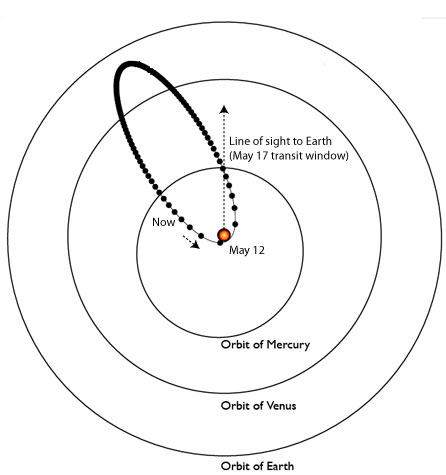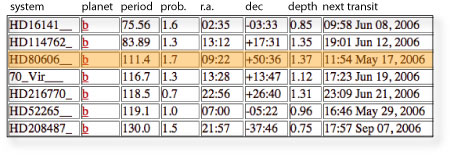
Priscilla, Nevada Test Site, 1957 (US National Archives, see Michael Light’s 100 Suns)
Today was a bright spring day in California, and now, as I write, the night air coming through the window is drunken, redolent with the scent of a million flowers.
Spring is also arriving on HD 80606 b, but with devastating ferocity. This morning, HD 80606 b’s parent star, which resembles our Sun in intrinsic size and brightness, subtended more than two degrees as it rose above the horizon. It loomed, angry and white, with more than four times the angular size of a full moon. It grew perceptibly larger as the day wore on. Above the vortical scream of the cloud tops, it was scores of degrees warmer today than yesterday.
Last Friday, HD 80606 b fell through the imaginary boundary given by the size of Mercury’s orbit. Midsummer — HD 80606 b’s periastron passage — will occur on Friday of this week. At this moment, the planet will plunge to within 6 stellar radii, and the furnace of the stellar surface will stretch across 19 degrees of sky.

Five days later, on its way back out to apastron, the planet will perforate the plane containing the line of sight to the Earth. At this moment, there’s a possibility (a 1.7% possibility to be exact) that a transit can be observed.

